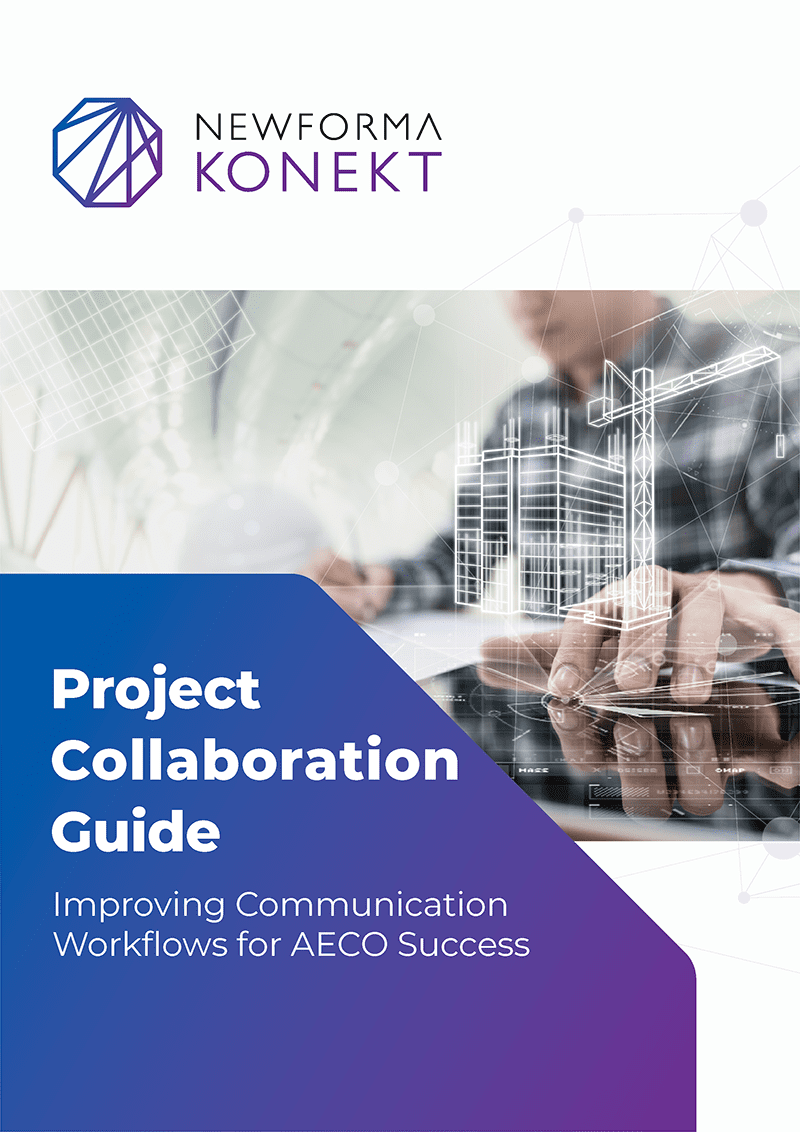Collaboration is more than a buzzword in the construction industry: no project is completed alone, and AECO firms recognise that successful project delivery is heavily impacted by stakeholders’ ability to work together
However, some may argue that collaboration is getting in the way of our ability to get things done.
The Work Innovation Lab report “An Executive’s Guide to High-value Collaboration” found that “29% of leaders say the expectations placed on their workers to collaborate—whether in meetings or with countless collaborative apps—prevent employees from getting their work done.”
So, if collaboration is necessary, but also driving a wedge between project teams and consequently increasing project costs, then maybe it’s time to rethink how we collaborate. And in Newforma’s experience, it’s not necessarily the lack of collaboration that is the issue, but the lack of focus and meaningful communication that results in wasted time, extra costs and frustration.
For construction projects, it is common for collaboration to take the form of a meeting. And there are lots of them. Today, they often occur through Zoom or TEAMS calls where it’s easy to be distracted with other things, like checking emails. And when everyone has more to do in a day than hours available, it’s understandable that they may not dedicate 100% of their attention to the issues at hand. Meetings also tend to include all stakeholders, regardless of what’s on the agenda: the MEP engineer may have to wait through thirty minutes of discussion on structural issues before their issues with the pipes are addressed. To try and improve collaboration, stakeholder teams will hold multiple meetings to try and get everyone on the same page, but that 02 comes at cost. Most attendees are on billable hours, meaning that their participation may not be the most cost-effective way to share information.
So how does one improve communication and coordination without sacrificing money and project quality?
Rethinking collaboration, and reducing the many costs associated with suboptimal stakeholder communication, is about examining how people are working together to share, communicate, and make decisions throughout the project lifecycle. Although collaboration between stakeholders is critical to project success, understanding where collaboration bottlenecks are occurring can help teams focus on the root cause of the problem. This will enable teams to prioritize and focus their communications to make better use of time and resources; thereby reducing project costs and limiting the possibility of human error.
As we rethink our collaboration strategy, reconsidering the systems we are using for communication is an essential step in ensuring optimal communication streams in project workflows. We have evolved from hardcopy correspondence to email, but we are a bit stuck in the email rut. Thankfully, we’ve found ways to “speed up” response time with real-time communication within key project workflows using shared project data thanks to the cloud.
This guidebook examines the biggest challenges in optimising project workflows by highlighting exactly where communication bottlenecks tend to occur within key points in the project lifecycle with the end game of greatly improving project delivery and increasing profitability using project information management (PIM).



